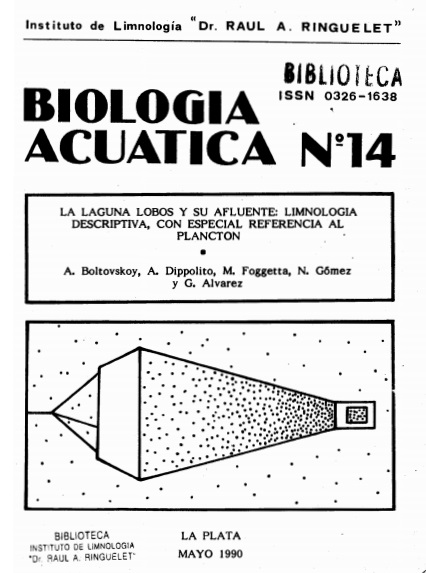La laguna Lobos y su afluente
limnología descriptiva, con especial referencia al plancton
Keywords:
limnología, laguna Lobos, planctonAbstract
Temporal and spatial variations of transparency, temperature, pH, conductivity, and plankton are described for the subtropical oligohaline Lobos pond (Buenos Aires province, Argentina) and its main tributary during a complete annual cycle. Morphometric and pluviometric data, as well as a brief revision of previous studies of pampasic ponds are given. Our results show that salts in the pond derived from its tributary, and that rainfall is the key factor in modifying the ecological conditions in the pond. 181 planktonic species, including several ticoplanctonic ones, were recorded; many of these are halophilous organisms. Discrimination was made between the species that dwell in the pond only, and those which have lotic origins. Numerically the phytoplankton is dominated by blue-green algae, while the green algae and diatoms are the most diversified groups. Copepods and rotifers are the most abundant zooplankters; while highest numbers of species were yielded by the latter and the ciliates.Downloads
Download data is not yet available.
Downloads
Published
2019-03-15
How to Cite
Boltovskoy, A., Dippolito, A., Foggeta, M., Gómez, N., & Álvarez, G. (2019). La laguna Lobos y su afluente: limnología descriptiva, con especial referencia al plancton. Biología Acuática, (14), 43 p. Retrieved from https://revistas.unlp.edu.ar/bacuatica/article/view/6604
Issue
Section
Artículos de investigación





















